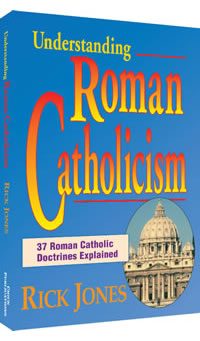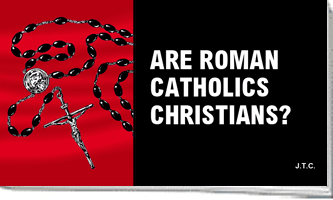What Did Vatican II Really Change...? Protestants!
- Issue Date: March/April 1984
Many Protestants believe that the Roman Catholic "Church" has undergone immense changes since the great Vatican II Council. It is widely believed that sweeping changes took place in both doctrine and practice among Catholics. But the Second Vatican Council was really just a facelift whose real success lies in the changes it brought about in Protestants!
An important aspect of the Second Vatican Council is often overlooked. It is best expressed by this excerpt from Roman Catholicism by Loraine Boettner:
An official document, "The Constitution on the Church," prepared by the Council and promulgated by the pope, reaffirms basic Roman Catholic doctrine precisely as it stood before the Council met... The doctrine of papal infallibility is restated. We are told that when 'by a definitive act he proclaims a doctrine of faith and morals... his definitions, of themselves, and not from the consent of the Church, are justly styled irreformable (Article 25).
The pope has lost none of his power. He remains the absolute ruler in the Roman church. But if papal decrees, past and present, are "irreformable," what hope is there for reform in the Roman church?
The change made by the Second Vatican Council, ending in 1965, were in liturgy, administrative practices and, most important, in ecumenism. While admitting that other churches contain "elements" of truth, it repeated that the Roman Catholic "Church" is the only true church.
Great care was taken to emphasize that no changes would be made in the doctrinal structure of the "church." However, Pope Paul did add one new doctrine, that Mary is the Mother of the church.
The Council updated liturgy and church administration to make it more acceptable to the twentieth century world. With the introduction of the "New Mass" in 1965, for example, Latin is no longer required except in certain instances.
But to Protestants is matters not whether the mass is said in Latin, English, or Swahili. The problem is not with the language but with the idolatrous teachings of the Mass and the required worship of the wafer-god, the cookie turned into Jesus.
Roman Catholicism has not, and in fact cannot change her gross errors regarding salvation. And the Council did not remove the more than one hundred anathemas (curses) pronounced by the Council of Trent on the Protestant churches and beliefs.
The Second Vatican Council brought an important change in methods. It had been decided that Protestantism could be better eliminated by ecumenical unity than by the sword and the inquisitor's torch. No longer calling the Protestants "heretics," but renaming them "separated brethren," the stage was set to woo Protestants into ecumenical unity.
Where once all Catholics were called to oppose and exterminate all "heretics," the new method was to absorb them into the Roman Catholicism. Special offices and commissions were set up on a global basis to work to bring about this unity. Catholics were even taught the vocabulary of the evangelical Christian, although the words were given different meanings that would not conflict with their relic and Mary worship.
The effect has been dramatic. Weary of the struggle against Rome, Protestant leaders have abandoned the warnings of the Scriptures, and rushed pell-mell toward sharing a yoke with the idolaters of Rome. The Second Vatican Council continues to be a global success, a stroke of genius to disarm and deceive the true believers in Christ.
- See more articles on related topics:
- Catholicism
- Ecumenism
- Catholic Doctrine vs Scripture
Other Articles from March/April 1984:
More on Catholicism:
Products of Interest:
-

Answers To My Catholic Friends
64 pages
A gentle witness you can give Catholics that deals with venerating images, purgatory, where popes go when they die, and more. -

Smokescreens
96 pages
Jack Chick shows that the ecumenical movement isn’t designed to bring all Christians into unity. That’s just a smokescreen, hiding the Vatican’s real intent, to stamp out religious freedom and rule the world. -

50 Years in the Church of Rome
368 pages
This classic work shows how this priest began to question Catholic teachings until he became saved, and led his entire parish to salvation. -

Understanding Roman Catholicism
224 pages
37 Catholic doctrines from the current Catechism are compared with the Scriptures. They're not Christian! 
Are Roman Catholics Christians?
Show Catholics that neither their good works nor their religion can save them.



